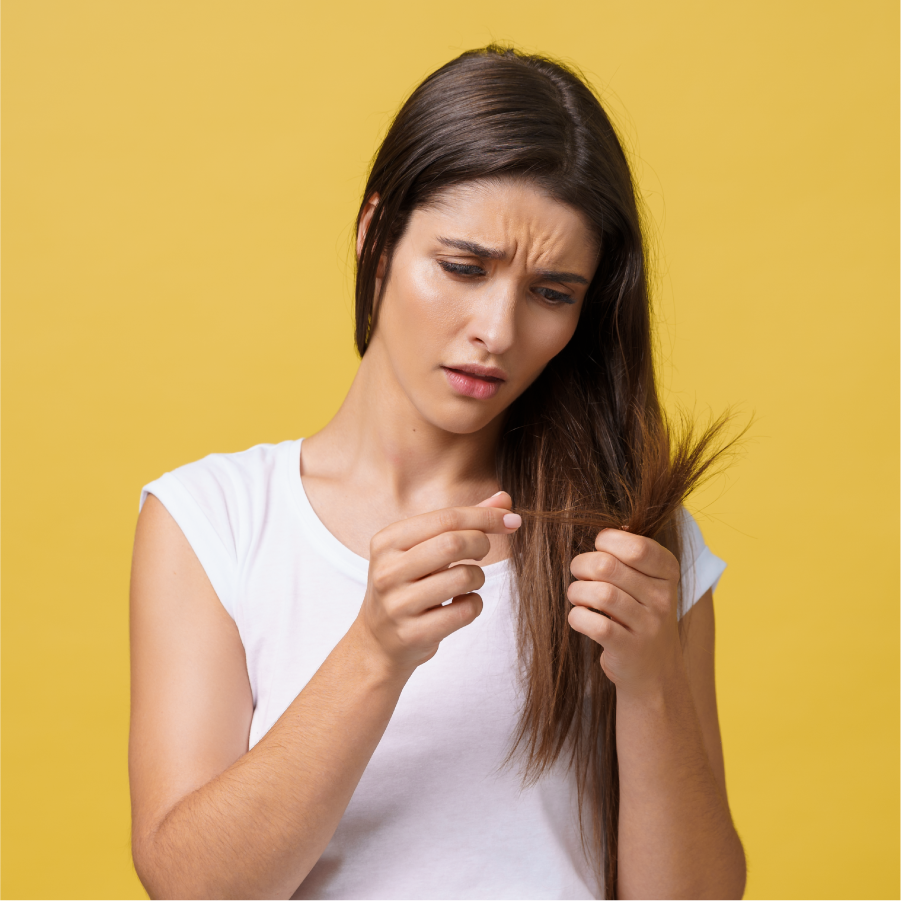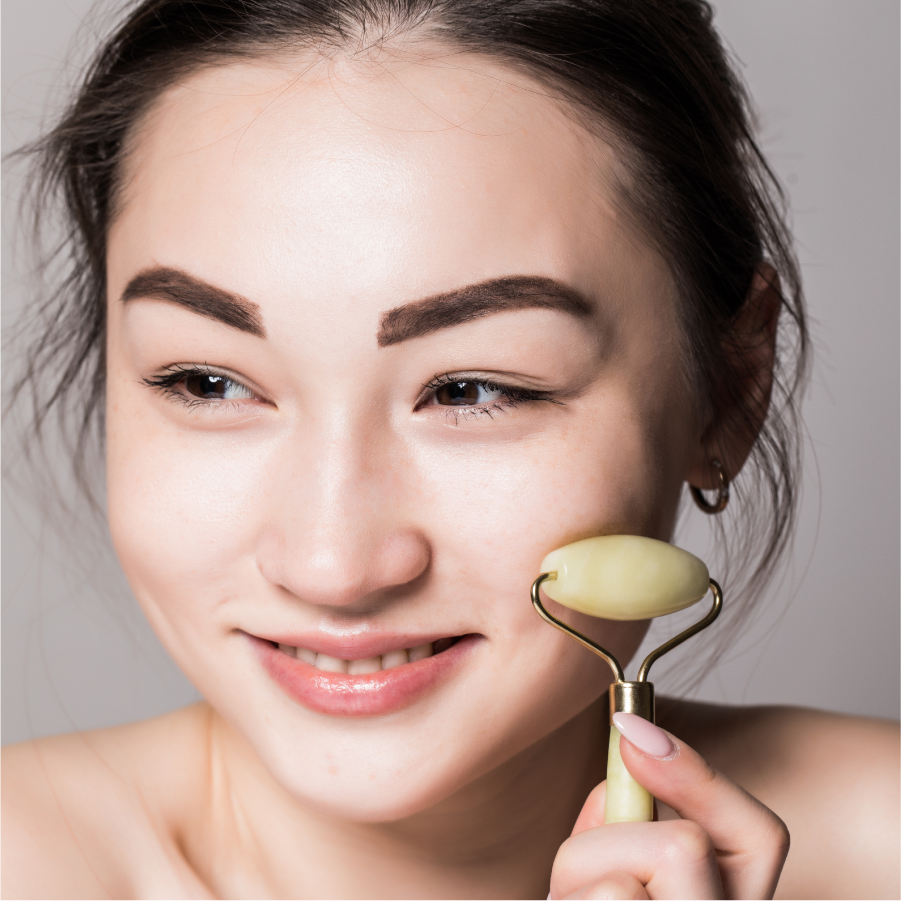
Do Your Fingernails Have Something to Say to You?
Perhaps it is not all about how much makeup you use to temporarily enhance your features. Regular check-ups and treatment are essential. Since nails are such a small part of your hands, they are often overlooked. However, your fingernails do more than simply adorn your hands. To put it another way, they're supplementary health indicators. A positive sign is if your nail color is consistent and vivid.
Then, how to fix scruffy nails if they arise. What if there are noticeable humps, divots, or ridges? Pay close attention to the ends of your fingers. Have your nails ever looked normal? Do you wish to avoid a medical examination? Read on to learn how your nail health can affect your overall wellness.
What Exactly Is A Nail Made Of?
Keratin, a hardened protein, makes up the bulk of fingernails. Hoofs, claws, and horns are all made of keratin, the same protein that gives human fingernails their hardness. Our hair and skin contain it as well.
The nail's development starts at the root, a hidden fingertip region. The nail plate is formed when the cells underneath the epidermis die, harden, and protrude through the skin. As new skin cells replace the dead ones, the dead ones get compressed and flattened, taking on the appearance of a fingernail.
Like fingernails, toenails are also made of durable keratin protein and developed similarly.
Have Ever Heard About Cuticles?
A thin membrane called the cuticle forms a seal to prevent moisture from escaping between the nail plate and the fingertip. In addition, the cuticle is a protective layer that contains bacteria and germs from entering the nail bed. One's fingernails have many more uses than scratching an itchy spot or removing a tangled knot. Furthermore, their shape, size, and texture may reveal information about your general health.
This is why doctors always start with a thorough examination of the patient's hands. First, you can get an idea of the person's overall health and, perhaps, their health status from this. Next, sometimes diseases can be detected by looking under the fingernails.
Some Nail Detectable Illness Indicators
Several indicators of illness can be noticed on the nails, from nail discoloration to unusual lines and ridges.
-
White discoloration
Onycholysis is the medical term for the white discoloration of the entire nail plate. This is because the nail plate (the top part) has separated from the nail bed, as observed up close (skin underneath). Hyperthyroidism is also a possible cause, though trauma and fungal infections are more common culprits.
An example is when you bump into something and feel pain under your nail. Then you see a more extensive white area where you were hurt instead of a narrow white line at the top. Unfortunately, no treatment is available unless an underlying cause can be identified and treated.
-
Clubbing
When the tissue around the lunula (the white part at the base of the nail) becomes thicker, a condition known as clubbing occurs. This causes the nail to look more rounded than diamond-shaped. To see it, slide your finger to the side. Clubbing has been linked to many diseases and conditions, including the more well-known pulmonary ailments, lung cancer and chronic obstructive pulmonary disease (COPD), and inflammatory bowel disease.
-
Fingernail shaped like a spoon
Nails that have taken on a "spoon" form, medically known as koilonychia, are commonly seen in people with iron deficiency disorders such as anemia and hemochromatosis (a more rare disease). Most often associated with iron deficiency, whether or not it causes anemia. The nail does not curve inward as expected but bears a spoon-shaped impression.
If your fingernails look like this, you should get a complete blood count (CBC) to rule out anemia. It's important to remember that this is normal for a baby's fingernails. However, it is recommended that you take your child to a pediatrician.
-
Damaged & effortlessly broken nails
You've probably heard of onychomycosis before. Specifically, it refers to a fungal infection of the toenail unit (the plate, the bed, and/or the matrix). It can lead to discoloration, thickening of the skin directly under the nail, and flaking of debris from the area around the nail bed.
Symptoms can be mainly aesthetic at times, but they can also cause pain or discomfort at other times. Though antifungals may be helpful, it's important to remember that they don't always work. Toenails often require three to six months to shed and regrow completely.
-
Roughened fingernails
Injury or incorrect clipping can lead to onychocryptosis or ingrown nails. In addition, pain, discomfort, and even infection can result when the skin grows over the nail plate's edges. Mild treatments can promote healthy nail and skin growth, but sometimes your doctor must surgically remove the ingrowing portion of the nail.
-
Infected nail bed
As the name implies, a subungual hematoma is a blood collection under the nail, usually caused by trauma. You never know how hard one of these will hit; is it a featherweight or a sledgehammer? Nails can grow out and fall off in moderate situations. The pain from a significant subungual hematoma necessitates medical attention and drainage. If a hammer or heavy-weight thing has fallen, an X-ray must be performed before any fluids are removed.
-
Parallel white lines
Muehrcke lines characterize a nail bed with white lines running horizontally across it. These results may indicate that your blood is deficient in albumin (a protein found in the blood) and contact for further examination. Because they are etched into the nail bed just below the nail plate rather than the nail plate itself, these lines will not spread as the nail grows. Low albumin should cause the lines to disappear as protein consumption rises.
-
Beau's lines
Besides the nail bed, which Muehrcke also uses, a familiar spot for white horizontal lines is atop the nail plate. Beau's lines signify a significant illness or trauma that may have caused an abnormality in nail growth.
The lines can be used to determine the length of an illness or injury because normal fingernails grow from the base of the finger to the tip of the finger at a pace of roughly 1mm every six to ten days. Although if you're critically ill and spent two weeks in the ICU, you might observe a white line of paused nail growth during that time.
-
Pitting
These shallow indentations can sometimes indicate psoriasis on the nail plate. However, several autoimmune diseases and connective tissue disorders, such as arthritis, have been linked to pitting.
-
Spots of a reddish or brownish color
Blood clots under the nails are called splinter hemorrhages, typically appearing as vertical red or brown streaks. Like other nail traits, these streaks can indicate various medical issues. However, if this is a new finding and there is also a new heart murmur and fever, it may be a sign of endocarditis, an infection of the heart valves. So don't wait to see your family doctor.
-
Elongated & darkened axis
Longitudinal melanonychia is a typical variation in skin color characterized by darker hair and nail beds. Those with darker skin and those in their twenties or thirties are more likely to experience the regular variety. However, if these lines appear after age 60, this is a warning indication of possible melanoma and should be checked positively. Even in younger patients, this benign condition can be hard to tell apart from melanoma and should be evaluated by a dermatologist.
Melanoma that forms in the space between the nail and the skin is called subungual melanoma. Fifty percent of all melanomas occur in people with dark skin, so if you're concerned, see a doctor. A biopsy is a procedure in which a small tissue sample is removed and sent to a pathologist for closer inspection.
Nail discoloration, underlying skin discoloration, and interrupted nail growth are further signs of melanoma that require a sample to evaluate.
-
A crimson bump on your nail
Squamous cell carcinoma is another type of skin cancer that differs from melanoma. Squamous cells under the nail may appear red, erosive, and growing mass, impeding nail growth. A biopsy should be performed as soon as possible, just like in the case of melanoma.
-
Nail fold infection
Paronychia is a painful condition that causes the nail fold of your fingers or toes to become inflamed, red, and swollen. In most cases, bacteria are to blame for this ailment, which manifests as a red, hot, and painful sore. Antibiotics and maybe even an incision and drainage are necessary. Infection is much more likely to spread and cause more severe problems if you try to drain them at home.
Dishwashers, housekeepers, and swimmers are at increased risk for chronic paronychia. For example, people are constantly exposed to toxins or spend much time underwater.
Some Highlights of Preventive Measures
Few measures that can be taken to prevent the nail from getting harmed or damaged are:
- Manicure and regular nail cutting can help prevent infection.
- Always use gloves whether washing dishes, cleaning, or gardening.
- Nail polish and nail extensions can be harmful. Therefore, using them sparingly is essential for maintaining healthy nails.
- Add on YourHappy Collagen (Advanced) supplement which is formulated to promote healthy nails, skin, hair, & overall body health.
The Takeaway
If you notice any of these unusual symptoms in your nails, there's no need to panic. Likewise, there may be no cause for alarm if you notice a change in your fingernails. If you're worried, though, a consult with the doctor is in order; your fingernails could have something to say.


